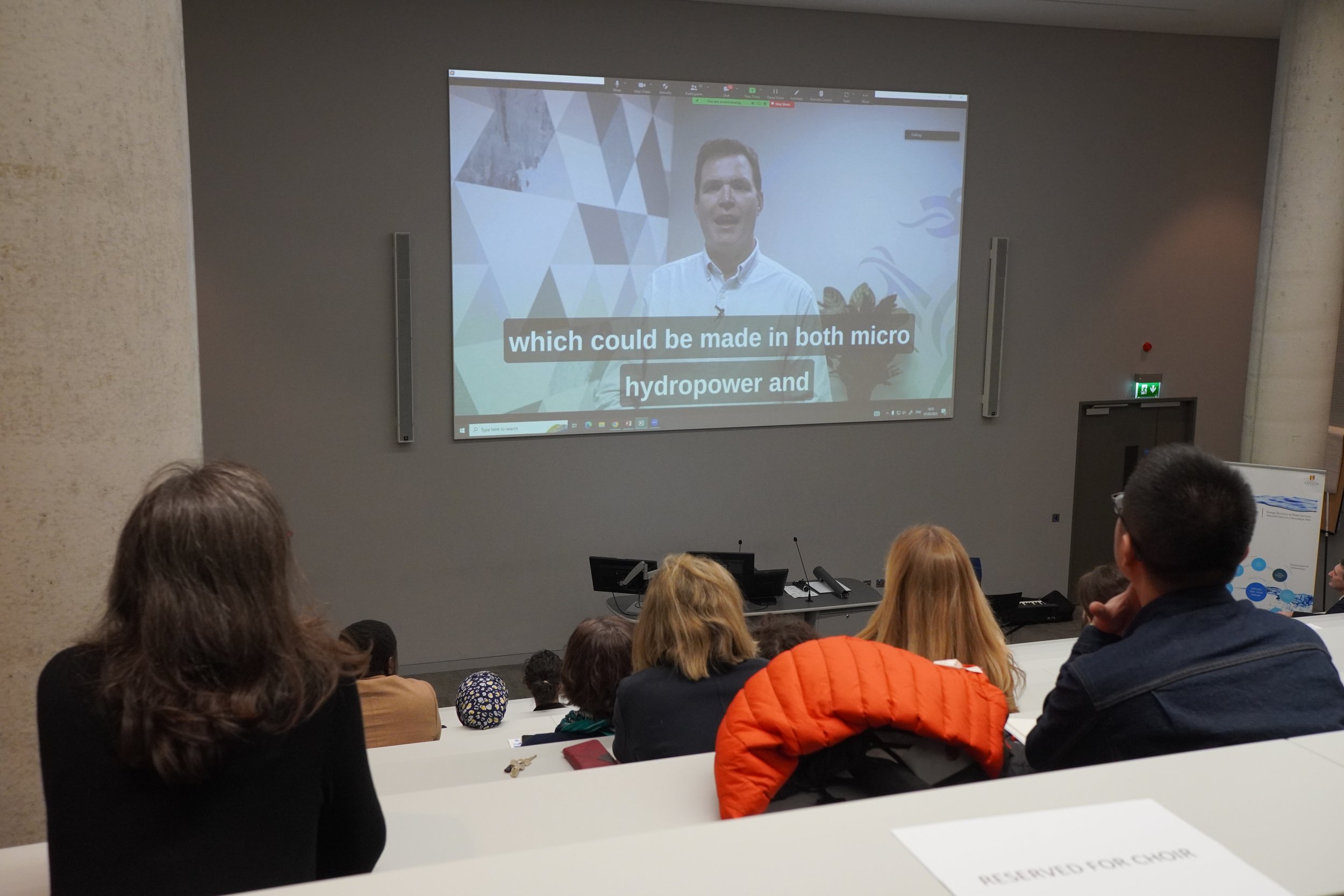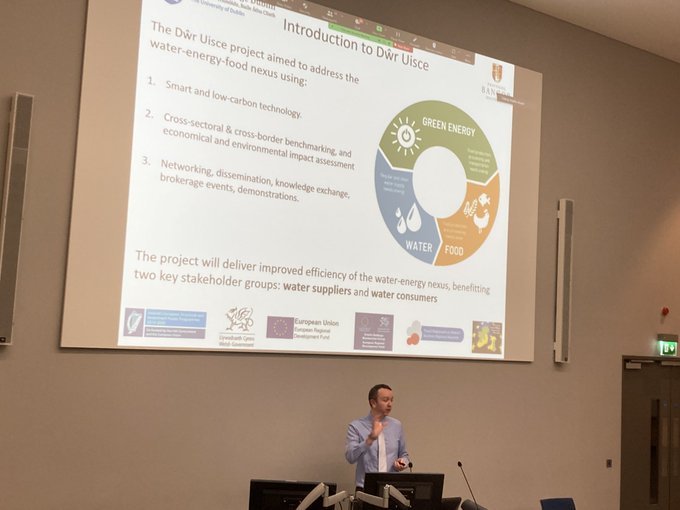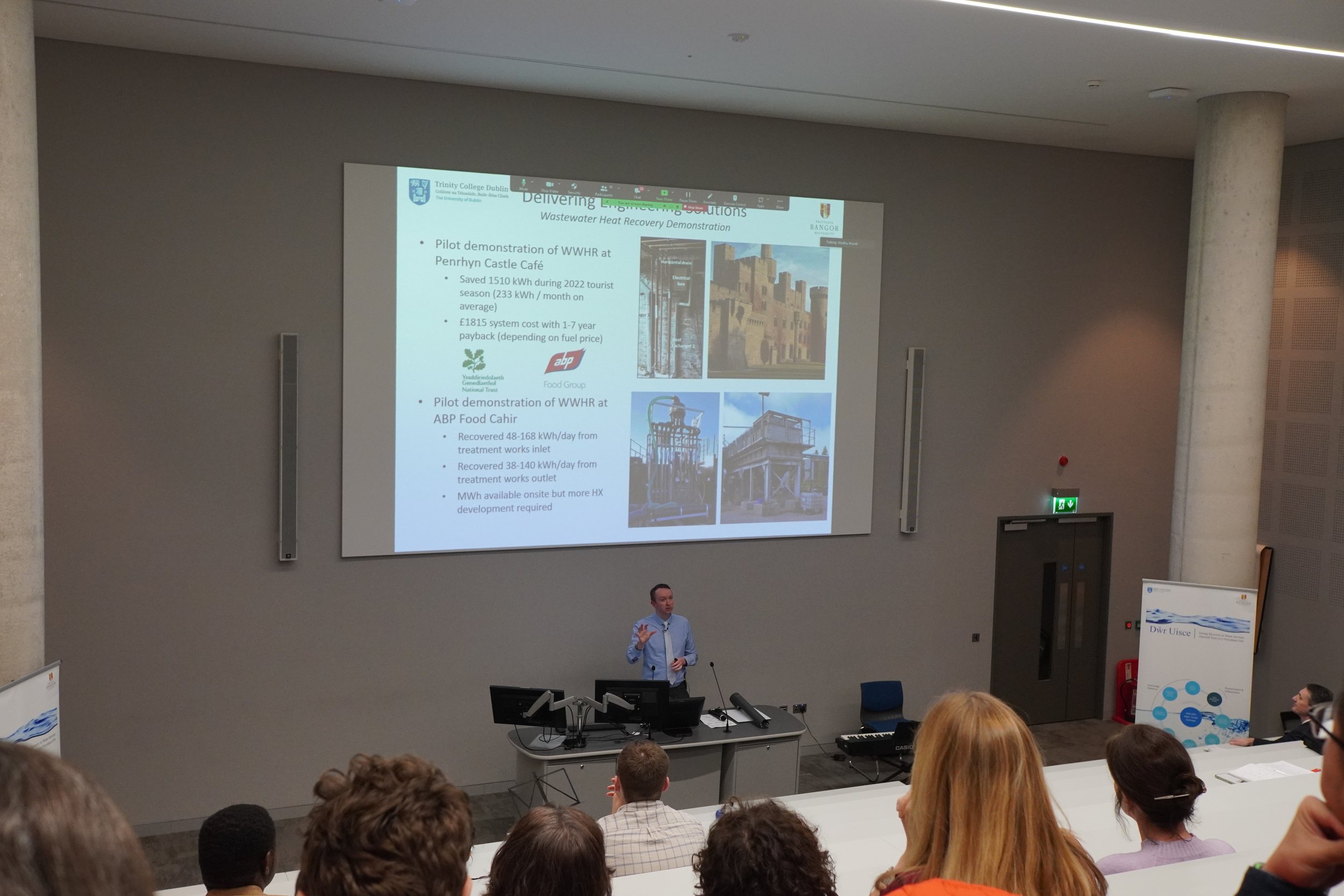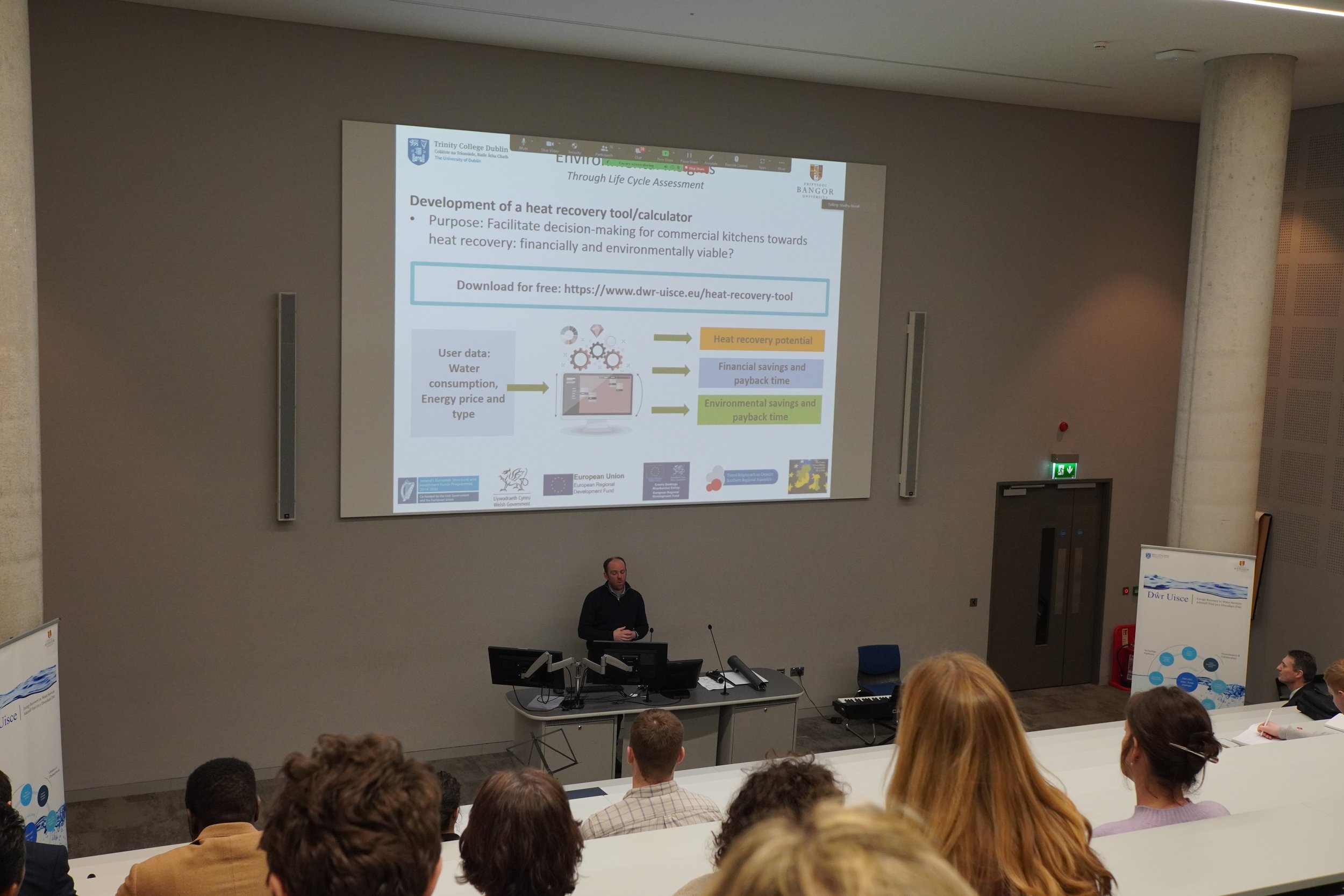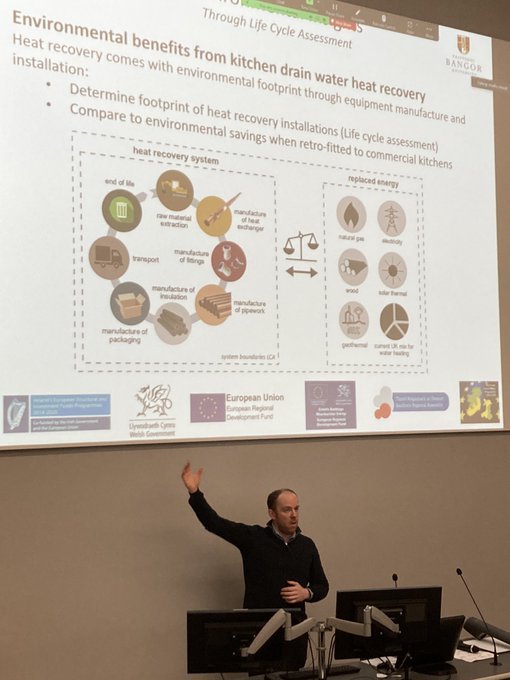Poster 1: Blackstairs Gourp Water Scheme
Amid the rising challenges faced by water utilities worldwide, reducing operating costs, managing water leakage, and providing reliable services while keeping user bills affordable has become a top priority. To address these concerns, Dŵr Uisce has explored the recovery of kinetic energy from water infrastructures where energy dissipation currently occurs.
Pumps used as turbines (PATs) have emerged as a cost-effective and efficient solution for hydro power generation. This innovative approach offers numerous advantages, including compact dimensions, off-the-shelf availability, easy installation and maintenance, and reduced investment costs compared to traditional hydro turbines. Click on the image to open the poster.
Through careful investigation, the Dŵr Uisce team identified significant energy recovery potential at the Blackstairs Treatment Works, operated by EPS Group. By installing a centrifugal Pump As Turbine (PAT) in the water supply line leading to the raw water storage tank, they harnessed 3.3 kW of power. The PAT design algorithm, developed by Trinity College Dublin, assisted in selecting the ideal characteristics for the main PAT and generator set. If operated continuously throughout the year, this energy recovery device has the potential to reduce the treatment works' energy consumption by an impressive 20-25%.
Poster 2: Pump as Turbine Micro-Hydropower installation - Ty Mawr Wybrnant
While Wales boasts significant potential for small-scale hydropower development, the upfront investment and declining subsidies have hindered its economic viability. However, Dŵr Uisce took on this challenge with an innovative approach, aiming to demonstrate the feasibility of micro-hydropower schemes even at the "pico" scale, generating less than 5 kW. Click here to open the poster.
At Ty Mawr Wybrnant, a historical farmhouse managed by the National Trust and a popular tourist site in Northern Wales, a small hydropower scheme was installed to reduce energy consumption related to lighting and heating. The scheme harnesses the power of the nearby Afon Wybrnant stream, generating approximately 4 kW of clean renewable electricity. With a measured net hydraulic head of 35 m and a design flow rate of 25 l/s, this installation is expected to produce around 19,000 kWh of electricity annually, equivalent to over 8 tons of CO2 emissions avoided per year.
The primary goal of this installation is not only to showcase the environmental benefits, such as minimal impact on the ecosystem and significant CO2 savings but also to prove the economic attractiveness of small-scale hydro schemes.
Conclusions
The Dŵr Uisce project has made substantial progress in promoting sustainable solutions within the water and energy sectors. The two pilot plants highlighted in the posters provide real-world evidence of the project's commitment to reducing energy consumption, lowering carbon emissions, and optimizing resource efficiency. These innovative installations demonstrate the potential for wider adoption of energy recovery technologies and micro-hydropower schemes, leading us towards a more sustainable future for water and energy management.












